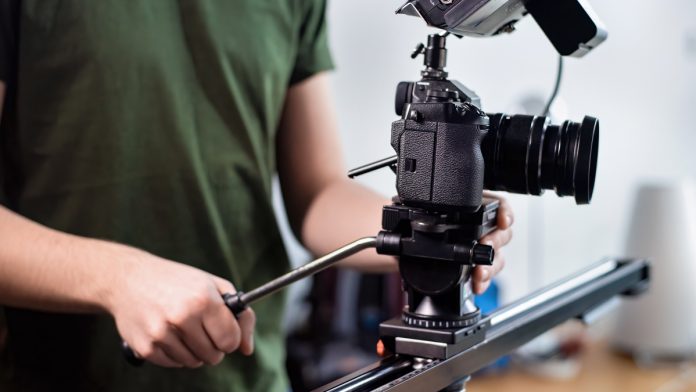Modern cinematic production depends on cutting‐edge follow focus systems that ensure precise lens control and artistic focus transitions. These systems combine intricate mechanical design, innovative material choices, dynamic motion principles, and smart digital integration to deliver reliable performance on set. Each component is meticulously engineered to meet the high standards demanded by filmmakers today. By harmonizing multiple disciplines into a unified mechanism, this technology illustrates the essence of Physics and Engineering Behind Follow Focus System. The following sections delve into the key aspects that empower these systems, explaining how every element contributes to superior focus control in the cinematic equipment industry.
| Table of Contents | |
|---|---|
| I. | Precision Mechanical Design & Gear Systems |
| II. | Material Science and Engineering |
| III. | Torque, Inertia, and Force Dynamics |
| IV. | Damping Mechanisms and Vibration Control |
| V. | Motorized Systems: Electromechanical Integration |
| VI. | Feedback Systems and Closed-loop Control |
| VII. | Ergonomic Integration and Mechanical Balance |
| VIII. | Fine Calibration and Customization Capabilities |
| IX. | Wireless and Digital Integration |
| X. | Thermal Stability and Environmental Considerations |
Precision Mechanical Design & Gear Systems
Precision mechanical design is the cornerstone of follow focus systems in cinematic equipment. High-quality gear systems ensure smooth, consistent, and accurate movement of the focus ring, a critical factor for creative lens control. Meticulously engineered gear arrangements minimize backlash and provide reliable stability during rapid focus adjustments. This attention to detail enables cinematographers to achieve seamless focus transitions even under demanding shooting conditions, ultimately enhancing the overall performance and reliability of the system.
Material Science and Engineering
Advances in material science have revolutionized follow focus systems by incorporating lightweight, high-strength alloys and composites. These materials offer superior durability and minimal wear while maintaining dimensional precision. Optimized material choices reduce overall weight and improve responsiveness, which is vital for handheld operation and dynamic camera movements on set. This careful selection directly contributes to the robustness of the system, ensuring it endures the rigorous demands of cinematic production without compromising performance.
Torque, Inertia, and Force Dynamics
Optimizing torque, inertia, and force dynamics is essential for responsive follow focus systems. The dynamic interplay between rotational forces and mass distribution directly influences the smoothness of focus transitions. Precise torque management minimizes lag and overshoot, crucial for accurate adjustments in rapidly changing scenes. This meticulous balance highlights the importance of motion principles, encapsulated by Physics Behind Follow Focus System, ensuring that the system maintains high accuracy even under variable load conditions.
Damping Mechanisms and Vibration Control
Effective damping mechanisms and vibration control are vital for preserving the integrity of focus adjustments. Integrated shock absorbers, tuned masses, and elastomeric elements work together to suppress unwanted vibrations, ensuring a steady performance. These measures are particularly important during rapid or abrupt movements, where external disturbances can compromise focus accuracy. This careful application of damping principles, reflective of the Physics Behind Follow Focus System, ensures that cinematic focus transitions remain sharp and consistent under dynamic operational conditions.
Motorized Systems: Electromechanical Integration
Motorized systems integrate precision motors with mechanical drives to automate follow focus functions. This electromechanical integration allows for smoother, more controlled focus adjustments essential for modern cinematography. Real-time actuation and finely tuned control mechanisms enable rapid, repeatable performance. Reflecting the essence of Engineering Behind Follow Focus System, these motorized components seamlessly bridge mechanical design with automated control, providing cinematographers with enhanced precision and operational efficiency in dynamic shooting environments.
Feedback Systems and Closed-loop Control
Advanced feedback systems and closed-loop control are key to maintaining precise focus. Sensor arrays paired with microprocessors continually monitor and adjust the focus mechanism in real time, mitigating any mechanical discrepancies. This dynamic correction ensures that focus remains accurate despite external disruptions or system wear. Such sophisticated control architecture embodies the principle of Engineering Behind Follow Focus System, marrying digital precision with traditional mechanics to deliver outstanding performance in fast-paced cinematic applications.
Ergonomic Integration and Mechanical Balance
Ergonomic integration is crucial in designing follow focus systems that are both effective and operator-friendly. Designers carefully balance weight distribution and mechanical layout to reduce fatigue during long shoots while maintaining precise control. A well-balanced system ensures that the focus mechanism feels intuitive and responsive, enabling smooth adjustments without compromising accuracy. This harmonious integration of form and function is essential in supporting the demanding needs of cinematic production.
Fine Calibration and Customization Capabilities
Fine calibration allows cinematographers to tailor follow focus systems to specific shooting requirements. Adjustable gear ratios and sensitivity settings provide customizable responsiveness, accommodating various lenses and focal lengths. Quick on-set calibration techniques enhance flexibility, enabling filmmakers to adapt to different shooting environments and creative needs. This high level of customization ensures that the focus system meets the precise demands of each production, enhancing overall performance and artistic control.
Wireless and Digital Integration
Wireless and digital integration has transformed follow focus systems by enabling remote operation and seamless connectivity with modern camera setups. Digital interfaces facilitate real-time adjustments, data logging, and intuitive control through handheld devices or software. This connectivity minimizes cable clutter and enhances mobility on set, allowing for dynamic repositioning without sacrificing control. The evolution toward wireless solutions empowers cinematographers to achieve precise focus control while streamlining the production workflow.
Thermal Stability and Environmental Considerations
Thermal stability and environmental resilience are essential for ensuring consistent performance in follow focus systems. Engineers design these systems with materials and cooling solutions that counteract temperature variations and harsh conditions. Protective housings, heat dissipation features, and sealed components safeguard the mechanism from environmental stress, ensuring reliable operation during extended filming sessions. This proactive approach to thermal management guarantees that the focus system maintains high precision regardless of external conditions, reinforcing its suitability for diverse and challenging shooting environments.

